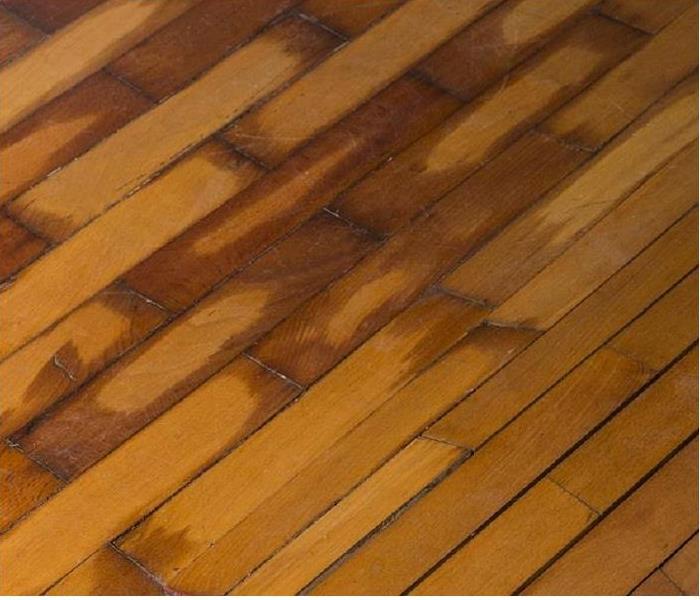How Hard Is It to Remove Water from Flooring?
6/8/2020 (Permalink)
SERVPRO Can Restore Your Beachwood Water Damaged Flooring
Water losses often migrate to the flooring of your home, making it necessary for our restorers to dry up many types of materials. Cleaning up water from the floors of your Beachwood home can be more complicated and complex than it initially appears. While many homeowners understand what is necessary to remove surface water and pooling after a loss incident, often underlying concerns like absorption and migrating water beyond the surface goes unchecked and unmanaged.
Water damage in Beachwood homes can vary significantly based on the source of the emergency. Plumbing breaks and appliance failures can often leave your home contending with higher volumes of water, sometimes even hundreds or thousands of gallons. Within minutes, some sensitive materials used in flooring and wall systems can begin absorbing the standing water. Removing surface and trapped water from these materials involves several advanced tools and technologies available to our responding SERVPRO technicians.
How Damaged Can Carpeting Get?
Carpeted floors are a standard installation in many area homes, meaning that these materials often can become affected by migrating water after a loss. In the case of standing water, absorption levels can be high, passing quickly through the fiber surface layer and moving to the padding and subflooring portions of the flooring system beneath it. Preserving and protecting this type of flooring involves the use of several practices and equipment, including:
- Carpet Wands – These attachments offer a powerful suction that primarily affects the top layer of carpet flooring systems. These approaches are ideal for when padding underneath the surface is getting removed and replaced.
- Weighted Extractors – Weighted extraction units utilize the technician's weight to squeeze the top layer and underlayment of carpeting against the subflooring. An onboard vacuum collects water forced to the surface through this pressing approach.
- Floating the Carpet – When both the padding and the top layer can get preserved and protected, it is advisable to float the carpet to remove lingering moisture in these materials. By positioning a centrifugal air mover between the padding and upper layer of carpet, we can dry both materials simultaneously.
Is Hardwood Ruined If It Gets Wet?
Hardwood flooring is synonymous with a higher price tag for Beachwood water damage reinstallation and repair, so it is vital to many homeowners to address and moisture concerns in these materials as soon as possible. Wood plank flooring is highly sensitive for the absorption of standing water and can hide pressing concerns beneath the surface. It is vital to utilize our advanced technologies for moisture detection, such as thermal imagery and surface moisture meters, to indicate the dampness that needs addressing before irreparable structural damage occurs. Often the drying process follows a similar pattern:
- Using Drying Mats – Drying mats slowly draw moisture from harder surfaces. When placed perpendicular to the seam of planks, these mats can affect a much broader damaged area.
- Tenting – By using poly-sheeting to surround the affected area and limit the available workspace for drying mats, we can maximize their effectiveness and efficiency.
- Continual Moisture Monitoring – Tenting allows our professionals to monitor the progress of the drying effort continually. Because it is possible to over-dry wood flooring and damage the planks, continual monitoring is vital.
What Happens When Water Reaches the Subflooring?
Subflooring materials like OSB board and plywood do not resist water, so when migrating effects reach this underlying layer of flooring systems, it can become highly destructive. This layer's saturation requires fast action, as delaying drying when water reaches this area can ultimately require material removal and reinstallation. We can offer controlled demolition and reconstruction with a full division of licensed residential contractors on our roster whenever necessary. Some of the approaches for managing wet subflooring include:
- Drying Mats – Much like wood plank flooring, it is possible to utilize the continual draw of moisture that drying mats can generate on subflooring materials.
- Dehumidifiers – Desiccant and low-grain refrigerant (LGR) dehumidifiers can reduce saturation and moisture content in the house's damaged areas.
- Controlled Demolition – In some situations, there is no avoiding the destructive forces of migrating water. When this happens, our contractors must remove damaged materials to prevent further damage, provide access for focused drying efforts, and prepare the area for the reconstruction we can later perform when mitigation completes.
When it comes to water damage scenarios for your home, it is vital to have experienced professionals whenever disasters strike. With an extensive inventory of equipment and experienced technicians, our SERVPRO of Toms River team can make it "Like it never even happened." Give us a call today at (732) 349-9898.




 24/7 Emergency Service
24/7 Emergency Service
